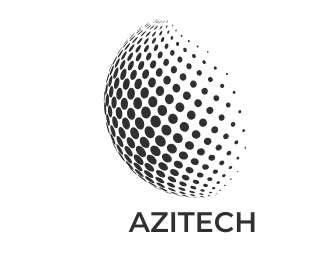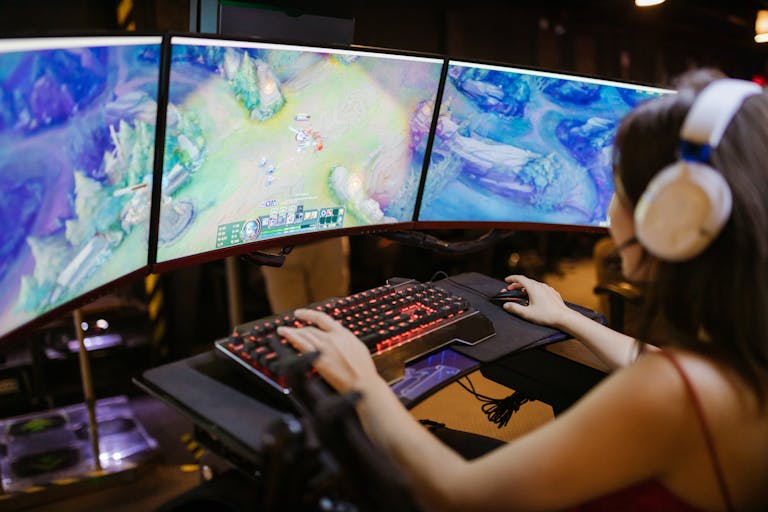Basics of quantum computing.
What is a quantum computer?
Through advancements in semiconductor technology, computers have been able to dramatically increase performance and decrease costs up to this point. However, as we reach our financial and technological constraints, we will no longer be able to expect such performance increases. However, in a number of domains, like large data processing, deep learning, and combinatorial optimization, there is a growing demand for computations. In light of this, there are great hopes for the development of quantum computers, which will be able to do tasks requiring enormous computational power.

It is claimed that quantum computers can solve issues at extremely high rates that would take supercomputers hundreds of years to process because they work on an entirely new mechanism that is distinct from that of ordinary computers. This is due to the fact that, in contrast to conventional computers, which employ binary numbers of 0 or 1, quantum computers are capable of simultaneously expressing 0 and 1, which allows for the possibility of parallel processing (the principle of superposition).
What is quantum annealing?
The two main categories of quantum computers are annealing type and gate type. Traditionally, “quantum computer” refers to gate type computers, which are computers in which the present processing unit “bit” is substituted by a “quantum bit.” The development of Shor’s method in 1994 garnered a lot of attention because it may be used to decipher codes. This approach uses a quantum computer to swiftly conduct prime factorization of enormous integers. Nevertheless, there are a number of obstacles to overcome, and it may take several decades before it is actually used in daily life. The process of annealing kind is a quantum computer that was first conceived by Toronto Institute of Technology professor Nishimori in 1998 and used for the first time globally by D-Wave of Canada in the year 2010. It is a quantum computer that applies quantum computers to carry out a procedure similar to the annealing of metals; in other words, it is a quantum computer that searches for the least energy state according to natural rules. Because it makes use of the idea of quantum superposition, quantum annealing is claimed to be appropriate for combinatorial optimization issues, as it can significantly increase the number of “trials” required to find the optimal combination. Furthermore, we have reached the point where practical implementation is becoming apparent, and research organizations and businesses throughout the world are vying with each other to create it.
What is a combinatorial optimization problem?
Selecting the optimal option from a vast array of options is a combinatorial optimization problem. When looking for train transfers, one well-known example is the shortest route problem, which determines the best path from a starting point to a destination.
The feature of these combinatorial optimization issues is that as the scale increases, the number of options increases explosively, making it significantly harder to choose the optimal solution.
Consider the following scenario: “If X trucks are loaded with Y packages each, which packages should be loaded onto each truck and which route should be taken to deliver the packages the fastest?” This would be an example of the ideal route for home delivery. The number of delivery bases grows exponentially, but there are even more combinations to consider when you factor in the need to deliver packages in the shortest amount of time, minimize gasoline consumption and delivery staff working hours, and respond to constantly changing traffic conditions, absences, redelivery requests, and other situational changes. It is anticipated that in this instance, the precision and speed of calculations for using approximations will be limited, and quantum annealing devices are anticipated to assist.
Initiatives toward the social implementation of quantum computing
Having developed the first quantum elements and devices in the world throughout the 1990s, NEC is a leading corporation in the field of quantum computing technology. The company’s immediate goal is to create an easily scalable, fully-connected quantum annealing system.
NEC’s quantum computing initiatives
Furthermore, we are pursuing research and development as well as application demonstrations of quicker and larger-scale simulated annealing to handle combinatorial optimization problems while we wait for the implementation of high-performance quantum annealing devices. This project makes use of NEC’s supercomputer technologies, including the SX-Aurora TSUBASA, and it will carry on in the future to address even more complex combinatorial optimization issues.
Initiatives with Tohoku University
On future computer systems, NEC and Tohoku University have started collaborative study.

To be more precise, the company is using a pseudo-quantum annealing machine installed at Tohoku University in conjunction with a newly developed machine (*1) that utilizes NEC’s superconducting technology and is configured to be noise-resistant, enable multi-qubit processing, and maintain a quantum superposition state for an extended period of time. The company is trying to provide feedback for future machine development and investigate use cases, while also taking into consideration the best possible overall setup of both machines, accounting for issues like communication delays.
Features of NEC’s quantum annealing hardware
Accurately solving a range of combinatorial problems with quantum superposition time and complete connections
Up until now, the main technological obstacles to the realization of quantum annealing machines have been the difficulties of long-term quantum state maintenance—which is essential for speed—and the complexity of creating a computational element network that can handle large-scale problems.
NEC believes that the superconducting parametron elements, which it successfully developed and verified in 2014, can be used for quantum annealing to sustain the quantum state for extended periods of time. It also believes that by arranging these elements on a plane in accordance with specific rules, the scale can be expanded while retaining full logical connections. It’s thought that
Combinatorial optimization problems can be solved at extremely fast speeds with this approach, even when the The target problem is a sizable one.
NEDO Project
chosen to serve as a prototype corporation for quantum annealing technology research and development
NEC, in collaboration with Tokyo Institute of Technology, Waseca University, and Yokohama National University, proposed “Research and development of quantum annealing technology using superconducting parametron elements” in response to the call for proposals for the 2018 commissioned project “Development of AI chips and next-generation computing technologies that enable high-efficiency and high-speed processing/Development of next-generation computing technologies” commissioned by the New Energy and Industrial Technology Development Organization (NEDO). The proposal was chosen. *1 In conjunction with the concurrently adopted shared software platform project for Using machines, this research and development endeavor seeks to realize a high-speed and highly accurate “optimization solution platform” for actual challenges in all industrial domains, and support the advancement of the social systems’ high precision and efficiency in Society 5.0. It is anticipated that optimization issues that previously relied on low-precision approximation approaches due to time restrictions can be handled with high accuracy in a short amount of time by introducing an entirely new calculating principle using quantum annealing machines to cloud computing.
With the NEDO project “Comprehensive Research and Development of Quantum Computing and Icing Computing Systems,” which it is currently involved in, NEC’s research area has greatly increased.
Achieving both “coherence time (quantum superposition time)” and “integration” is a hurdle for the practical implementation of “quantum annealing machines,” which are anticipated to be a breakthrough in high-speed solutions to combinatorial optimization issues. As part of its ongoing efforts to create home-based “quantum annealing machines,” NEC has verified the functioning of quantum bits made of superconducting parametron elements in a basic circuit of three-dimensional superconducting wiring that runs at extremely low temperatures. We aim to enlarge the circuit scale and speed up research on integrating quantum bits with a long coherence period by utilizing the three-dimensional wiring of this superconducting circuit.
Towards the realization of future general-purpose quantum computers
chosen to oversee the “Fault-tolerant Universal Quantum Computer” Moonshot R&D project.
Research and development project “Development of integration technology for superconducting quantum circuits” has been assigned to Tsuyoshi Yamamoto, Chief Researcher at NEC, as project manager by the Japan Science and Technology Agency (JST). *2 As a research institute, NEC is also involved in the project and is conducting studies to eventually create a general-purpose quantum computer.

Under the Moonshot R&D initiative, the government funds innovative research and development while setting lofty objectives known as “Moonshot Goals” that draw attention to pressing social concerns like global warming and the super-aging society. The research and development project “Development of integration technology for superconducting quantum circuits” is part of Moonshot Goal 6, which aims to “Realize an error-tolerant general-purpose quantum computer that will dramatically develop the economy, industry, and security by 2050.” To expedite the development of superconducting quantum computers, we will create the hardware element technologies needed for large-scale, high-integration superconducting quantum bits in this project. Therefore, by 2050, we hope to have a large-scale superconducting quantum computer operational.






